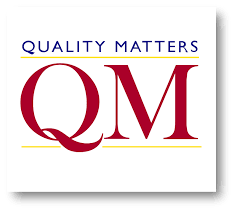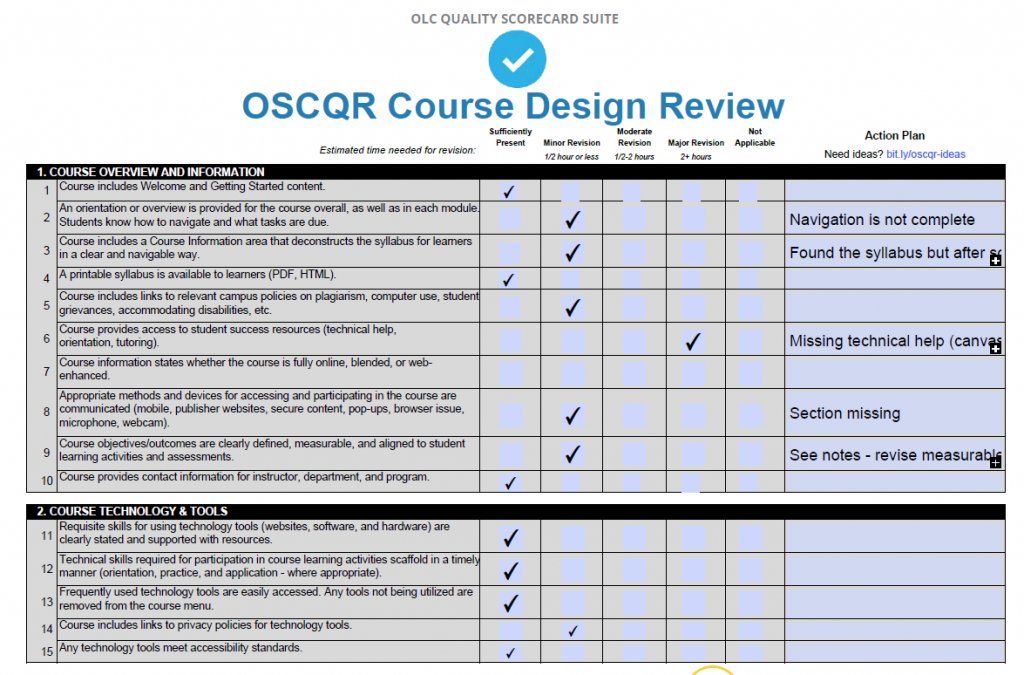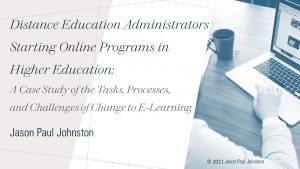Stop staying “We don’t know if online learning works.” This was true a few years ago, but the data are in: Online learning works and we even know how it works better. The truth is that we have an expansive wealth of articles related to best practices in every level of education. If the search “best practice” in www.jstor.org was done right now we would get almost a million articles (JSTOR is self described as “a growing digital library of academic journals, books, and primary sources” and my top pick for finding articles). Within these best practices are a growing library of best practices related to e-learning.
I would encourage every teacher to be continually researching to inform their practice. However, the planning and grading demands on a teacher make it difficult to spend time reading a lot of articles dedicated to pedagogy. Thankfully, there are some organizations that have compiled many best practices into rubrics that can be applied to online courses. Here are the two leading rubrics that I rely upon and will be using more in the months and years to come:
1. Quality Matters
Website: https://www.qualitymatters.org/
Summary: Using over 1000 articles as the foundation for their rubric, QM stands at the front of the line. They not only provide a system for assessing quality, but training on how to evaluate using the system and a network of over 8,000 reviewers who can help evaluate courses.
Helpful perspective: Their best-practice approach focuses on course design, not course delivery. Their 43 standards are helpful, but may seem too exhaustive. Among these standards they have chosen 6 as critical course components. A course can not met expectations if it does not “align” with these critical components. They are:
Learning Objectives:
2.1 The course learning objectives or course/program competencies, describe outcomes that are measurable.
2.2 The module/unit learning objectives or competencies describe outcomes that are measurable and consistent with the course-level objectives or competencies.
Assessment and Measurement:
3.1 The assessments measure the stated learning objectives or competencies
Instructional Materials:
4.1 The instructional materials contribute to the achievement of the stated course and module/unit learning objectives or competencies.
Course Activities and Learner Interaction
5.1 The learning activities promote the achievement of the stated learning objectives or competencies
Course and Technology
6.1 The tools used in the course support the learning objectives and competencies
Resources:
Download a one page with the Quality Matters Higher education Rubric, 5th Ed.
A more detailed rubric is copyright protected. I would encourage anyone who is interested to consider their first course, Applying the QM Rubric.
2. Online Learning Consortium (OLC) OSCQR
Website: https://onlinelearningconsortium.org/
Summary: OLC has been a leader in encouraging quality in online education. It is helpful to read about their 5 pillars of quality online education, which forms the basis for all they do. They have a great open source rubric they call OSCQR (pronounced like Oscar). Quoting from their website:
The aim of the Open SUNY COTE Quality Review (OSCQR) Rubric and Process is to support continuous improvements to the quality and accessibility of online courses, while also providing a system-wide approach to collect data across campuses, institutions, departments, and programs that can be used to inform faculty development, and support large scale online course design review and refresh efforts systematically and consistently.
Resources:
Download the OLC Quality Scorecard Suite – (or download PDF here OSCQR Course Design Review if that link does not work )
This is a check list type scoring card with 50 standards that can be used to review online courses.



